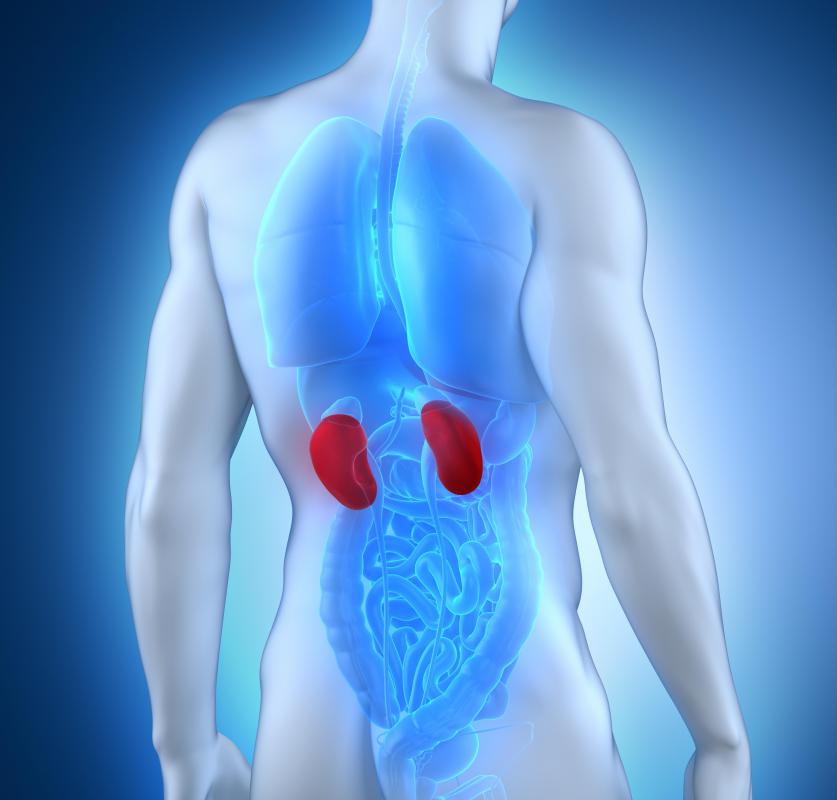At TheHealthBoard, we're committed to delivering accurate, trustworthy information. Our expert-authored content is rigorously fact-checked and sourced from credible authorities. Discover how we uphold the highest standards in providing you with reliable knowledge.
What is a Kidney Stent?
A kidney stent is a hollow tube that is placed in the body to keep the ureters, that run from the kidneys to the bladder, open. The stent is flexible to withstand the body’s movements and is coiled at both ends to help keep it in place. The tube is perforated with holes to allow urine to drain from the kidney to the bladder.
Kidney stents help remove obstructions in the ureters that can lead to infections and other urinary problems. They may also be used after surgery on the ureters to keep them open and allow them to heal properly. Stents are most often used when a patient has a kidney stone or other obstruction that cannot be removed.

Doctors insert a small telescope through the urethra and into the bladder to place a stent into the ureter. It usually has one end in the kidney and the other in the bladder. An x-ray is used to help the doctor determine whether it is placed correctly.
Kidney stents are typically only left in the patient until the blockage or obstruction is removed and the ureters heal. A doctor can remove a stent in much the same way as they place it, through a small telescope inserted in the urethra. Some devices have a small string on the end that threads outside the body and through the urethra. These types can be removed by pulling the thread and removing the device through the urethra.

Some patients experience undesirable side effects from kidney stents, though many of these improve over time as the body gets used to the device. Many people find that they urinate more frequently when a kidney stent is in place. They may also feel a heightened sense of urgency to urinate.
Patients may also feel pain or discomfort when passing urine or moving around. Some people, especially women, may have problems with urinary incontinence when a stent is in the bladder. A small amount of blood in the urine is fairly common following the placement of a kidney stent, though patients should always advise their doctors of any bleeding or other urinary problems.

In some cases, a kidney stent may dislodge and move out of place, which can cause pain or damage to other organs. When a stent migrates in this way, surgery may be necessary to remove it and repair any internal damage. The procedure can also cause an internal infection that can be treated with antibiotics. Due to the risk of infection, it is important for patients to notify their doctors of severe pain or fever following the procedure.
AS FEATURED ON:
AS FEATURED ON:













Discuss this Article
Post your comments